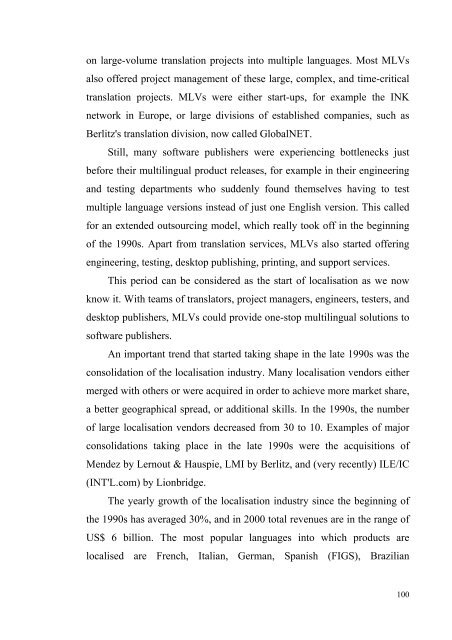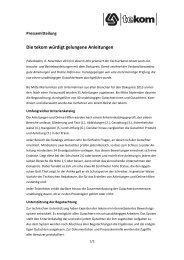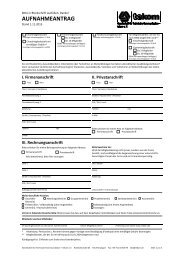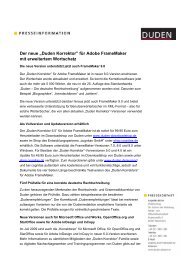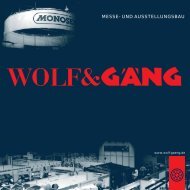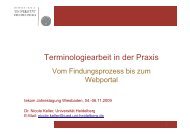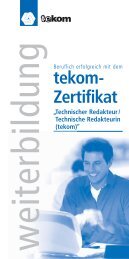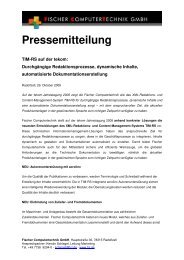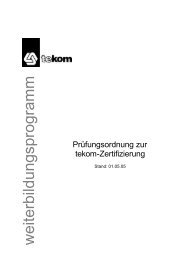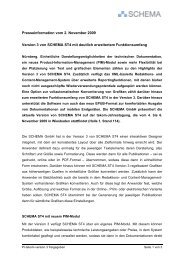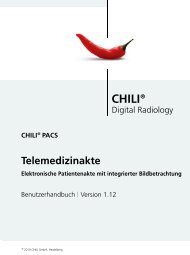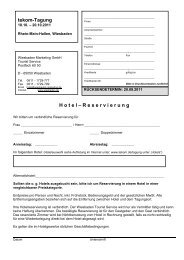qui - Tekom
qui - Tekom
qui - Tekom
Create successful ePaper yourself
Turn your PDF publications into a flip-book with our unique Google optimized e-Paper software.
on large-volume translation projects into multiple languages. Most MLVs<br />
also offered project management of these large, complex, and time-critical<br />
translation projects. MLVs were either start-ups, for example the INK<br />
network in Europe, or large divisions of established companies, such as<br />
Berlitz's translation division, now called GlobalNET.<br />
Still, many software publishers were experiencing bottlenecks just<br />
before their multilingual product releases, for example in their engineering<br />
and testing departments who suddenly found themselves having to test<br />
multiple language versions instead of just one English version. This called<br />
for an extended outsourcing model, which really took off in the beginning<br />
of the 1990s. Apart from translation services, MLVs also started offering<br />
engineering, testing, desktop publishing, printing, and support services.<br />
This period can be considered as the start of localisation as we now<br />
know it. With teams of translators, project managers, engineers, testers, and<br />
desktop publishers, MLVs could provide one-stop multilingual solutions to<br />
software publishers.<br />
An important trend that started taking shape in the late 1990s was the<br />
consolidation of the localisation industry. Many localisation vendors either<br />
merged with others or were ac<strong>qui</strong>red in order to achieve more market share,<br />
a better geographical spread, or additional skills. In the 1990s, the number<br />
of large localisation vendors decreased from 30 to 10. Examples of major<br />
consolidations taking place in the late 1990s were the ac<strong>qui</strong>sitions of<br />
Mendez by Lernout & Hauspie, LMI by Berlitz, and (very recently) ILE/IC<br />
(INT'L.com) by Lionbridge.<br />
The yearly growth of the localisation industry since the beginning of<br />
the 1990s has averaged 30%, and in 2000 total revenues are in the range of<br />
US$ 6 billion. The most popular languages into which products are<br />
localised are French, Italian, German, Spanish (FIGS), Brazilian<br />
100


